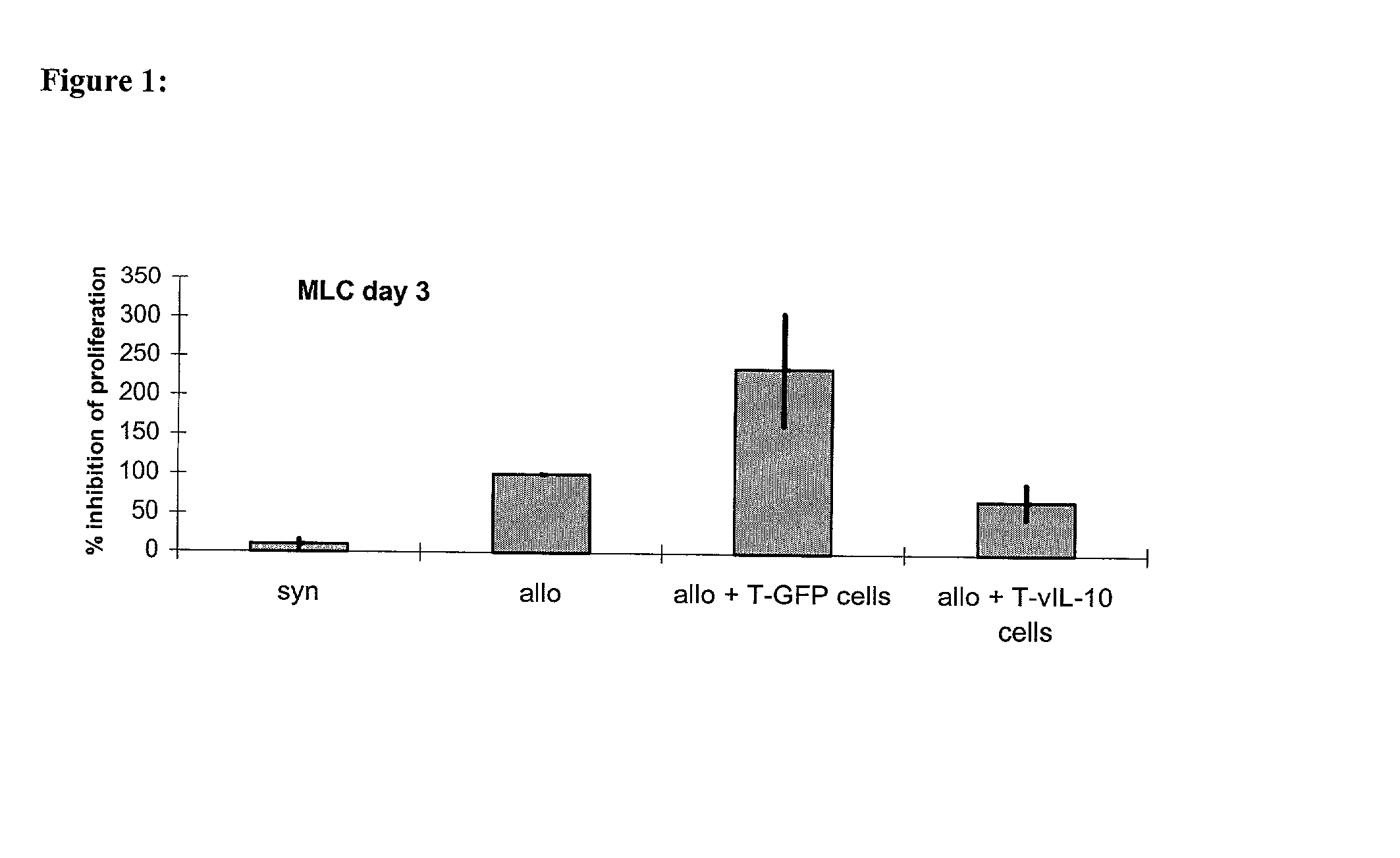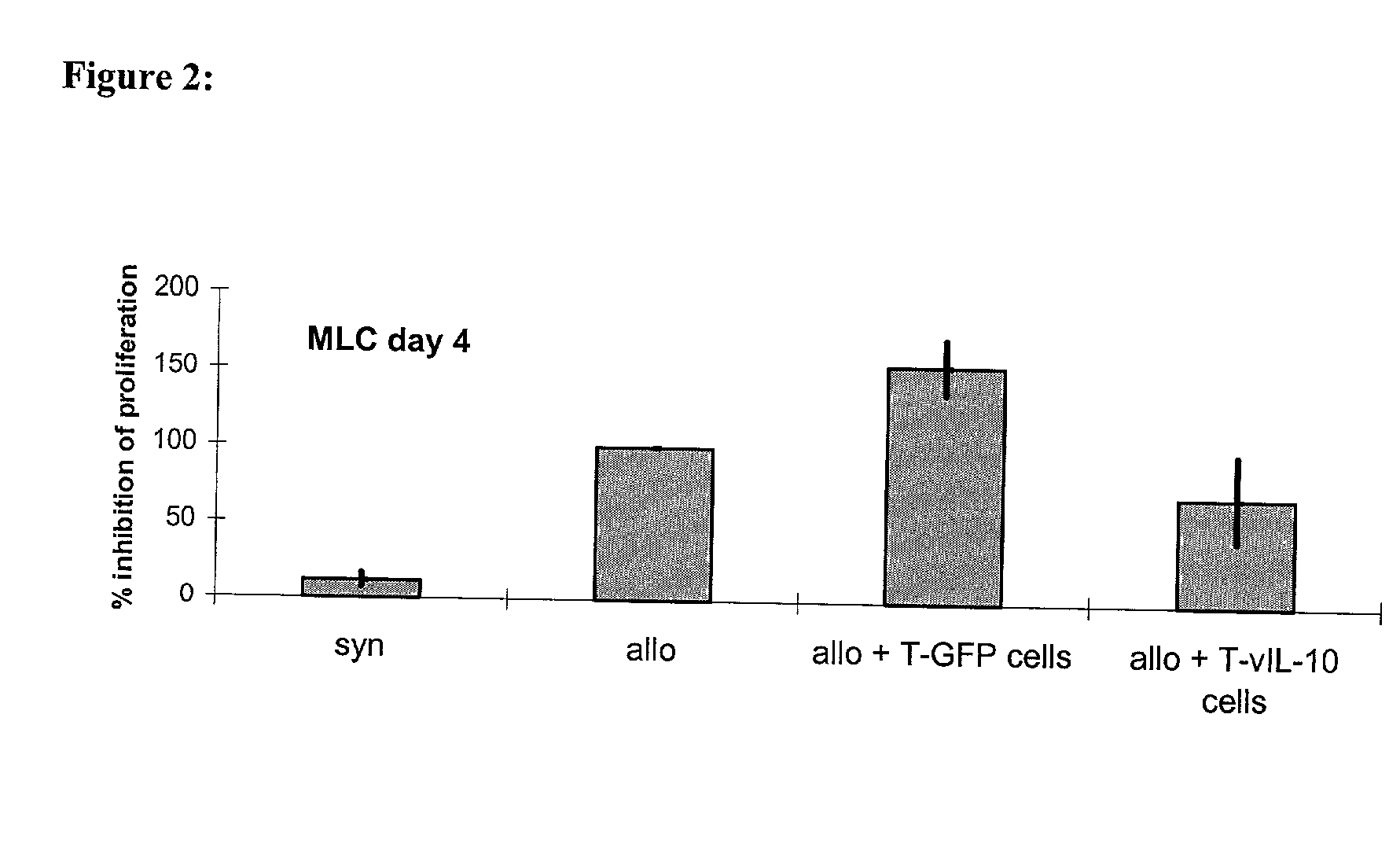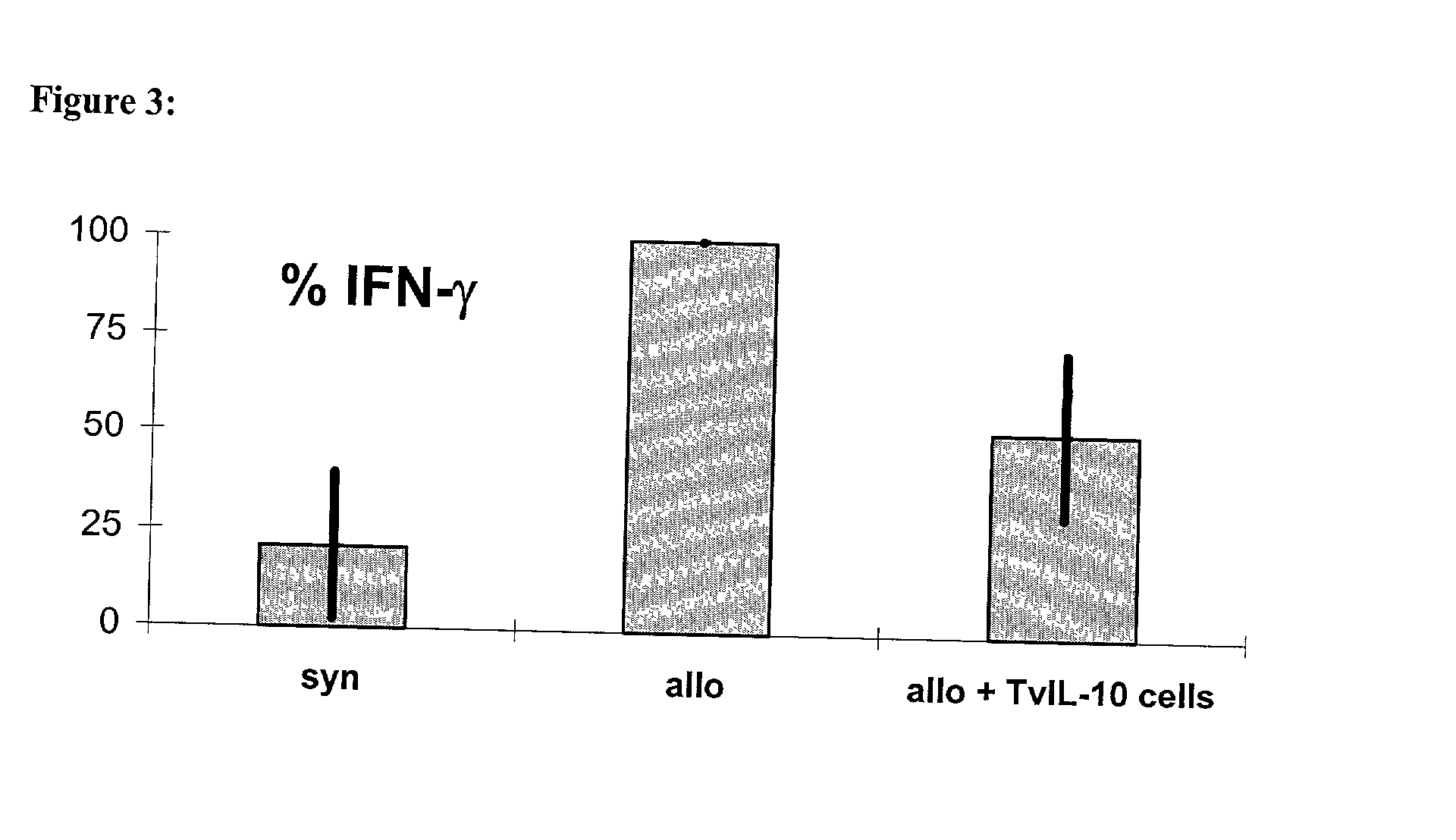Genetically modified T-cells, method for producing them and use thereof
a technology of t-cells and gene-modified cells, which is applied in the field of invitro gene-modified t cells, can solve the problems of unsatisfactory transplant rejection, serious side effects, and immunodeficient scid mice (without b and t cells) are also not able to reject an allogeneic organ
- Summary
- Abstract
- Description
- Claims
- Application Information
AI Technical Summary
Benefits of technology
Problems solved by technology
Method used
Image
Examples
example 2
Generation of the Alloreactive T Cells In-vitro
[0051] One to two days before starting the mixed lymphocyte culture (irradiated donor T cells cultivated with T cells of the recipient), the cell line, which produces the recombinant retrovirus with the therapeutic transgene, is taken in culture (DMEM+10%FCS+selection antibiotic G 418 0,5 mg / ml final concentration).
[0052] On day 1, the co-culture consisting of the mixed lymphocyte culture (primary MLC) and the retrovirus-producing cell lines is started. To this end the cells of the cell line are trypsinized, centrifuged for 5 min at 1.200 rpm and then added to T cell medium (TCM) without FCS. After that the cells are counted and put into 96 well plates (2.times.10.sup.5-2.tim-es.10.sup.6 cells / per well). Then the cells are left to grow in the CO.sub.2-incubator for 3-4 h (5% CO.sub.2) at 37.degree. C., before the T cells are added.
[0053] The T cells of the graft recipient were previously isolated from peripheral blood with the help of a...
example 4
say
[0071] The existence of the therapeutic gene in the supernatant can be proved by:
[0072] IL-4, ELISA, MHC-II upregulation on spleen cells;
[0073] vIL-10, ELISA, inhibition of the TNF-.alpha. production through macrophages, reduction of the MHC-II expression on monocytes; and
[0074] IL-12p40, no ELISA, inhibition of the production of IFN-.gamma. after stimulation of spleen cells.
example 5
Immuno-regulatory Potential of the Allospecific T.sub.VIL-10 Lymphocytes
[0075] The inhibition of the proliferation of naive T cells with the help of lymphocytes transgenic for vIL-10
[0076] was first proven in-vitro in the mixed lymphocyte culture (MLC). This invitro system was meant to imitate the situation of the T cell reactivity after allogeneic organ transplantation. To achieve this, naive recipient cells (which are meant to represent the T cells of the graft recipient) were stained with the membrane dye SNARF.TM. on day 0. When a cell divided this dye was handed down evenly, so that the intensity of fluorescence decreased.
[0077] Following this the stained recipient cells and the irradiated stimulator cells (which are meant to imitate the graft-specific cells) were put into a 96 well flat bottom plate at a ratio of 1:1 (3,5.times.10.sup.5 cells each). To investigate the influence of the therapeutic TVIL-10 T cells on the antigen-induced proliferation of the naive lymphocytes, th...
PUM
| Property | Measurement | Unit |
|---|---|---|
| volume | aaaaa | aaaaa |
| temperature | aaaaa | aaaaa |
| concentration | aaaaa | aaaaa |
Abstract
Description
Claims
Application Information
 Login to View More
Login to View More - R&D
- Intellectual Property
- Life Sciences
- Materials
- Tech Scout
- Unparalleled Data Quality
- Higher Quality Content
- 60% Fewer Hallucinations
Browse by: Latest US Patents, China's latest patents, Technical Efficacy Thesaurus, Application Domain, Technology Topic, Popular Technical Reports.
© 2025 PatSnap. All rights reserved.Legal|Privacy policy|Modern Slavery Act Transparency Statement|Sitemap|About US| Contact US: help@patsnap.com



